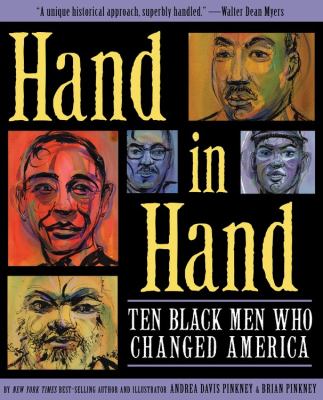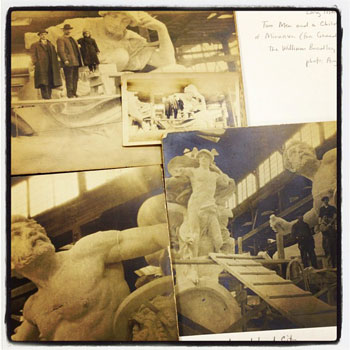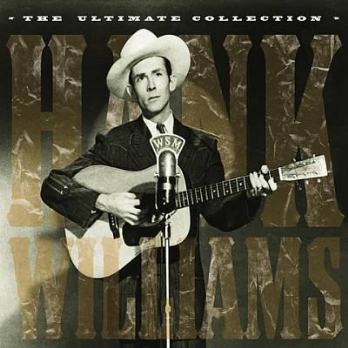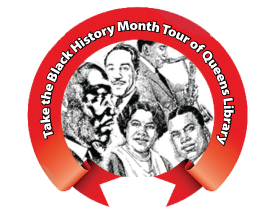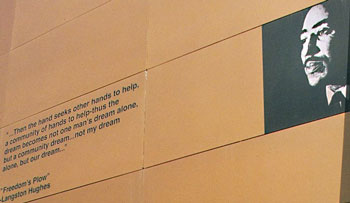February 18 marks the “birthday” of Pluto, a celestial body that has given astronomers great difficulty over the past 83 years.
A nameless mystery planet emerged as a theory in the 19th century, after astronomers discovered the planet Neptune, based on irregularities in the orbit of Uranus. Based on their mass estimates for Neptune, they decided that these irregularities had to be partially caused by gravitational interference from yet another celestial body.
This hypothetical celestial body was dubbed “Planet X” by Percival Lowell, a wealthy Boston man who established an observatory in Flagstaff, Arizona to search for it. The first 15 years of the 20th century were spent searching in vain. When Lowell died, a legal struggle tied up the observatory’s funding. On February 18, 1930, nearly a year after they began operating again, a young man named Clyde Tombaugh discovered the object.
The name “Pluto” was chosen in May 1930 by members of the observatory, inspiring the name of a new element, plutonium, and, possibly, the newly created canine companion to Walt Disney’s Mickey Mouse.
But since that auspicious start, the stature of this dark ball of rock, ice and frozen nitrogen has fallen steadily. In 1931, astronomers estimated it had the same mass as Earth. By 1948, that figure had been whittled down to one-tenth Earth’s mass. Another three decades and Pluto was one-100th the mass of Earth. Two years later, it was one-500th the mass. In the late 1980s, a NASA probe produced data on Neptune and its gravitational effect on Uranus that actually invalidated the theoretical need for a Planet X. Pluto’s discovery turned out to be, more or less, a fluke.
Most recently, Pluto lost its status as an official planet. Another celestial body was discovered in 2005 within our solar system, named Eris, that turned out to be slightly larger than Pluto. The debate over whether to call Eris a planet resulted in the drafting of a stricter definition for “planet” and the reclassification of Pluto as a “dwarf planet.”
In the U.S., the popular backlash to this decision was a bit of a shock. Astronomy is not typically the most celebrated of subjects in American popular culture. But some part of the national identity seemed to be bound up in Pluto. After all, hadn’t it been discovered by an American, in an American observatory? It’s a fascinating discussion, and Queens Library has accounts by both the astronomer whose discovery doomed Pluto to demotion, and by Neil DeGrasse Tyson, the witty astrophysicist and bestselling author who frequently breaks down the big questions of the universe for the common man.
So wish the solar system’s favorite dwarf planet a happy birthday. Who knows what the next decade will bring?
Caldecott Winner and Honors
Queens Library proudly carries all of the Caldecott Winner and Honor titles:
2013 Caldecott Medal winner: This Is Not My Hat, written and illustrated by Jon Klassen
2013 Caldecott Honor: Creepy Carrots!, illustrated by Peter Brown, written by Aaron Reynolds
2013 Caldecott Honor: Extra Yarn, illustrated by Jon Klassen, written by Mac Barnett
2013 Caldecott Honor: Green, illustrated and written by Laura Vaccaro Seeger
2013 Caldecott Honor: One Cool Friend, illustrated by David Small, written by Toni Buzzeo
2013 Caldecott Honor: Sleep Like a Tiger, illustrated by Pamela Zagarenski, written by Mary Logue
Coretta Scott King Winners and Honors
Queens Library proudly carries all of the Coretta Scott King Winners and Honors:
2013 Coretta Scott King Author Award Winner: Andrea Davis Pinkney, author of Hand in Hand: Ten Black Men Who Changed America
2013 Coretta Scott King Illustrator Award Winner: Bryan Collier, illustrator of I, Too, Am America
2013 Coretta Scott King Author Honor: Jacqueline Woodson, author of Each Kindness, illustrated by E. B. Lewis
2013 Coretta Scott King Author Honor: Vaunda Micheaux Nelson, author of No Crystal Stair: A Documentary Novel of the Life and Work of Lewis Micheaux, Harlem Bookseller
2013 Coretta Scott King Illustrator Honor: Daniel Minter, illustrator of Ellen’s Broom, written by Kelly Starling Lyons
2013 Coretta Scott King Illustrator Honor: Christopher Myers, illustrator and author of H. O. R. S. E.
2013 Coretta Scott King Illustrator Honor: Kadir Nelson, illustrator of I Have a Dream: Martin Luther King, Jr., written by Martin Luther King, Jr.
2013 Newbery Winner and Honors
Queens Library proudly carries all of the Newbery Winner and Honor titles:
2013 Newbery Medal Winner: The One and Only Ivan by Katherine Applegate
2013 Newbery Honor: Splendors and Glooms by Laura Amy Schlitz
2013 Newbery Honor: Bomb: The Race to Build—and Steal—the World’s Most Dangerous Weapon by Steve Sheinkin
2013 Newbery Honor: Three Times Lucky by Sheila Turnage
2013 Michael L. Printz Winner and Honors:
Queens Library proudly carries the following Michael L. Printz Winner and Honor titles:
2013 Michael L. Printz Winner: In Darkness by Nick Lake
2013 Michael L. Printz Honor: Aristotle and Dante Discover the Secrets of the Universe by Benjamin Alire Sáenz
2013 Michael L. Printz Honor: Code Name Verity by Elizabeth Wein
2013 Michael L. Printz Honor: Dodger by Terry Pratchett
*2013 Michael L. Printz Honor: The White Bicycle by Beverley Brenna is on back order from the publisher.
Have you read any of the award winners? Share your thoughts and reviews by adding a comment to this blog.
They stand looking at the camera, their faces neutral, their armbands reading “LIRR Jamaica.” These five men from Queens are draftees, waiting at the Jamaica Long Island Rail Road station for the train that will carry them to Camp Upton in Yaphank.
It was 1918, the United States had finally entered World War I, and the draft had swept up Americans from all walks of life to train and fight in Europe.
That included African-Americans, many of them eager to fight for their country and for a chance to be regarded as equals. Though African-Americans made up only 10 percent of the national population, 13 percent of those drafted were black. It was a journey that would carry them across an ocean, into the grisliest combat the world had ever seen, and through a constant barrage of racial intolerance.
This photograph from the Queens Library Archives depicts Robert D. Watkins, Charles Robinson, Edward Holling, Charles Walker and Harry Cole: four African-American, one white, all from Jamaica. There were only a few military bases around the country that would train four of them. Around New York City (not counting the 15th Regiment of the New York National Guard, which was formed earlier and trained upstate), that was Upton. African-American men poured into the base from all locations and walks of life, bunking in segregated barracks and training separately from their white counterparts.
“Heavens! What a collection and assortment of men,” remarked Samuel Blount, a black soldier whose writings are chronicled in Chad Williams’ Torchbearers of Democracy: African American Soldiers in the World War I Era. Blount called his soon-to-be comrades “rogues, ‘pimps,’ cut-throats, longshoremen, hod carriers, tramps thieves, students professional men, business men and men who were just plain nothing!”
Williams quotes another soldier, George Robinson, a Virginia Union University student: “It gave me a chance to study different classes which I never realized I would come into contact with.”
Their commanding general, Charles Ballou, was stern about the men’s conduct in order to avoid racially motivated conflict.
“Avoid every situation that can give rise to racial ill-will,” he wrote in an order that followed the arrest of a black soldier in Kansas for trying to enter a theater. “… White men made the Division, and they can break it just as easily if it becomes a trouble maker.”
The order severely damaged morale. The 367th Infantry Regiment, in training at Camp Upton, tore down the directive whenever it was posted and were therefore confined to the base. The regiment’s colonel even later issued a directive saying black officers would not have to require salutes from white soldiers.
The young African-American men in our photograph were probably trained to be part of the 367th Infantry, though the date of the photograph (August 5, 1918) suggests they may have either missed combat or arrived in Europe as replacement troops. But even if they were spared the horrors of industrialized combat in France, they faced other threats much closer to home. Their training at Upton would have lasted around seven weeks — which puts them at the camp exactly the same time as the fearsome influenza pandemic spread there. In the course of 40 days, one-fifth of the camp’s 30,000 inhabitants were hospitalized. The disease would go on to kill 675,000 people in the United States and perhaps 50 million people worldwide, far outpacing the carnage of the war itself.
According to Black Soldiers of New York State by Anthony Gero, black soldiers who made it to Europe also faced contempt and rumor-mongering from white American soldiers in France. Some units were denied pay for a month.
Still, the 367th and a few other New York units, part of the all-black 92nd Division, served with distinction when they arrived in the summer of 1918. Needham Roberts and Henry Johnson, members of the New York-based 369th Infantry, held off 24 German soldiers in the dead of night while guarding their observation post. They killed four enemy soldiers and injured many more, but both were shot and wounded. For their trouble they were simultaneously celebrated and caricatured by an insensitive American press.
The 367th also fought an heroic battle just a week before the Armistice to rescue a trapped French unit from barb wire and heavy machine gun fire. The entire battalion dispatched in the operation was awarded the Croix de Guerre by the French.
Equality did not await these soldiers when they returned home. Racial violence had quieted during the war. But it erupted again, frequently directed against black veterans, who were rightly proud of their service. It would take nearly two more decades and another world war before the United States military desegregated.
But none of that coming struggle is evident on the faces of these young men about train for war. The future, whether it entails death by machine gun or virus, or a return to a civilian United States unprepared to honor their loyalty, is distant and abstract. They just have to get on the train.
Want to learn more about African-American veterans? Stop by the Langston Hughes Library in Corona to look at any of these books from our Black Heritage Reference Collection:
African American Generals and Flag Officers: Biographies of Over 120 Blacks in the United States Military by Walter L. Hawkins
American Patriots: The story of Blacks in the Military from the Revolution to Desert Storm by Gail Buckley
African American Recipients of the Medal of Honor: A Biographical Dictionary, Civil War through Vietnam War by Charles W. Hanna
The African-American Soldier: From Crispus Attucks to Colin Powell by Michael Lee Lanning
Black Faces of War: A Legacy of Honor from the American Revolution to Today by Robert V. Morris
Buffalo Soldiers: African American Troops in the U.S. Forces 1866-1945 by Ron Field & Alexander Bielakowski
Soldiers of Freedom: An Illustrated History of African Americans in the Armed Forces by Kai Wright
Strength for the Fight: A History of Black Americans in the Military by Bernard C. Nalty
War and Race: The Black Officer in the American Military, 1915-1941 by Gerald W. Patton
Grand Central Terminal will be celebrating its centennial all year long, and though the train station is located in Manhattan, there's a reason Queens buffs can share in the pride and excitement of this historic occasion: The iconic statues were made in our own Long Island City.
Photographer August Kruzensk visited the William Bradley and Sons Stone Yard as the statues, which include the mythological figures Minerva, Hercules and Mercury, were being crafted and assembled. The photos Kruzensk took in 1914 can be viewed at the Archives at Queens Library.
For more on the history of this New York landmark, check out:
Grand Central: How a Train Station Transformed America, published in 2013 in conjunction with Grand Central's centennial.
Grand Central: Gateway to a Million Lives, which tells the story of a remarkable and beautiful building whose birth, survival, and restoration reflect the critical role architecture plays in the expansion of our cities.
100 Years New: The Immediacy of New York City Landmarks for Our Lives Today, a free event at Queens Library at Flushing: Join regional planner John Stern and architects Anthony Romeo and Dale Laurin as they discuss Grand Central Terminal and the Woolworth Building, which were both completed in 1913.
*Have you visited Grand Central Terminal? Share your favorite memories of the station with us by leaving a comment.*
As of last month, New York City has a country music station again. That’s great, but the country genre has a vast and rewarding back catalog that may be more appealing than some of the generic, classic rock-infused hits you’ll hear on the radio. Queens Library's catalog can offer a pretty decent road map.
You can go back to Alan Lomax’s field recordings to hear the rural music that became country & western in the early 20th century. It’s always been twangy, heavy on acoustic stringed instruments. Just like the blues, it’s steeped in themes of loneliness, despair and death.
Jimmie Rodgers is regarded as one of the earliest country stars. He was a yodeler who died here in New York City in 1933 from tuberculosis. His blend of old hillbilly songs, folk, gospel, blues — and anything else he cared to throw in — gave his songs a wide appeal. Another titan of early country was Hank Williams, a singing troubadour who wrote his own songs and died young after a life of traveling and substance abuse. Williams’ knack for memorable lyrics (Your Cheatin’ Heart, for example) and lifestyle helped shape a generation of hard-living country stars.
“Western swing” was another subgenre of the early years, like Bob Wills and His Texas Playboys. This was bouncy jazz music with a country twang. That music peaked in the 1940s, but it had a profound influence on later stars like Willie Nelson and Merle Haggard.
Electric instruments increasingly made their way into country music recordings, and by the 1950s, rock ‘n’ roll was making its mark, too.
Johnny Cash, who got his start alongside Elvis Presley at Sun Records in the mid-1950s, was practically a punk rocker by country standards. Listen to his fiery performances at Folsom or San Quentin prison for proof of that. He sped the songs up, playing with a guitarist, bassist and drummer, but no steel guitar or banjo. Of course, he went through mellower phases in his recording career, but his music retains the starkness of his Arkansas upbringing and the sneer of rock ‘n’ roll.
At the same time, Nashville was becoming the hub of the country record labels. Recordings became more lushly arranged, and studios kept teams of expert musicians ready for any country singers. It was also a hub for songwriters, who flocked there to make a living selling songs for “countrypolitan” artists to record. One of them was a young Texan named Willie Nelson, who wrote the Patsy Cline hit Crazy and Faron Young's classic Hello Walls. As he became disillusioned with the record company-imposed limitations on what the songs sounded like, Nelson helped form a rebellious subgenre called “outlaw country.” These artists tended to record with their own bands, often writing their own songs and arranging them however they pleased.
Nelson’s stunningly spare, tender 1975 version of Blue Eyes Crying in the Rain is clear evidence of how powerful outlaw country can be. He strips the song to the quiet desolation at its core — practically nothing but his acoustic guitar, a bass, and an accordion.
At the same time that Nashville was emerging in the 1950s, another school of country music was emerging in rural California. These artists also preferred electric instruments, relying heavily on the new solid-body electric guitars put out by Fender, along with drums, bass and steel guitar. The so-called Bakersfield sound had its champion in Buck Owens, who, along with his Buckaroos, recorded succinct, lively songs full of bright electric guitar parts and humorous wordplay. His first No. 1 hit, Act Naturally, was so catchy that Ringo Starr picked it up and the Beatles recorded it in 1965.
Owens’ successor in the 1960s was a young man who, unlike Johnny Cash, actually did time in California prison (where Cash's performances reportedly inspired him to pursue his own music). Merle Haggard and the Strangers took the Bakersfield sound and wedded it to darker, grittier lyrics about hard times and drinking.
As the ‘60s gave way to the ‘70s, rock ‘n’ roll began to pay more heed to country music. In 1968, the Byrds, famous for Bob Dylan covers and jangly folk-rock, brought on a new member whose deep love of country music drove them to record Sweetheart of the Rodeo, a sincere album of country covers and originals that holds up surprisingly well today. But the band was not a hit with country audiences, who did not know what to make of them when they played the Grand Ole Opry in Nashville.
That new band member, a colorful Harvard dropout named Gram Parsons, left the band soon after, but his subsequent work with the Flying Burrito Brothers and as a solo artist laid the foundation for what has become known as alt-country.
At the same time, women performers and songwriters were coming to the fore. Dolly Parton’s 1971 album Coat of Many Colors is an all-time classic (she supposedly wrote the title song on the back of a dry cleaning receipt for the suit of her stage partner at the time, Porter Wagoner). Loretta Lynn brought her own hardnosed, working-class sensibility to the female perspective in country music songwriting (her 2004 collaboration with Jack White, Van Lear Rose, is also excellent).
Once we reach the 1990s, we find contemporary country—stuff with lots of classic-rock influences. Garth Brooks was a titan of this era. We’ll leave this section short because you can turn on the radio to hear these guys: Travis Tritt, Brooks & Dunn, Toby Keith, Brad Paisley and many more. Their music retains some of the puns and other wordplay that’s characteristic of country music, but to my ears, it lacks the sense of peril or desolation that underpinned those classic older tracks. Perhaps it’s because today’s recording artists aren’t from the era of the Great Depression, sharecroppers and unpaved roads. That’s certainly not their fault, but it gives their music a good-timey sheen that can’t match the depth of feeling in their predecessors’ work.
Want to try playing some classic country songs on guitar or piano? Queens Library's enormous music score collection has you covered.
In honor of Groundhog Day, on February 2, young library visitors learned about groundhogs and their knack for predicting weather. Since neither New York City's Staten Island Chuck nor Pennsylvania's Punxsutawney Phil saw its shadow, both predicted the arrival of an early spring. To get ready for spring, kids repurposed old MTA maps into beautiful recycled-paper flower crafts using a kite fold.
Tags
Queens Library houses more than a collection of works about African-American history. Our library has been shaped by, has gone to great lengths to document and continually celebrates the African-American experience.
Did you know that one Queens Library, the one with the highest circulation in the country, became a public library and became funded in part thanks to the efforts of an African-American leader? Can you guess which community library in our borough is home to a mini archive of music legend Louis Armstrong? Or which location houses the important papers of inventor Lewis Latimer?
We’ve created a Black History Tour to highlight some of the important connections Queens Library has to African-American history. Below is your guide to these unique “landmarks,” both physical and digital. Some may be right on your block; others can be accessed instantly!
1. Queens Library at Langston Hughes
Named in honor of the famous African-American poet and author of the Harlem Renaissance, Langston Hughes, this leading institution in the community has been designated as a Literary Landmark and is home to the Black Heritage Reference Center of Queens County... Visit this landmark.
2. Queens Library at East Elmhurst
“Keeping jazz alive in Louis and Lucille Armstrong’s neighborhoods” is one of the goals of this community library, home to a “mini archive” of Armstrong memorabilia... Visit this landmark.
3. Queens Library at Flushing
Thanks in part to the advocacy of Mary Ann Shaw, the principal of an African-American school in Flushing, this became a free circulation library in 1884... Visit this landmark.
4. Queens Library at Central
Home to many special collections, Queens Library at Central has two of note for Black History Month... Visit this landmark.
5. The Archives at Queens Library
Among the 36,000 books and volumes of serials, approximately 2,500 cubic feet of manuscripts, 4,500 maps and broadsides, 105,000 photographs, 422 feet of vertical files, and 9,000 reels of microfilm housed at the Archives, you will find plenty covering African-American history, including the important papers and patents of this noted black inventor... Visit this landmark.
6. Queens Libraries with Free Black History Month Events: Some of the above landmarks will be hosting free programs for the community, as will:
Queens Library at McGoldrick – Tuesday, February 19: Free Event, African-American History “Guess Who?”
Queens Library at Hollis – Thursday, February 21: Free Event, Black History Through Poetry and Quilting
Queens Library at Lefrak City – Wednesday, February 27: Free Event, Looking Back, Moving Forward: Friends of the Library Black History Celebration
Queens Library at Richmond Hill – Thursday, February 28: Free Event, Black History Remembrance Day
7. Queens Library's Website
Your Queens Library card grants you free access to the African-American Experience Database, an online collection of authoritative reference works, primary sources, images and audio clips documenting Blacks in the United States... Visit this virtual landmark.
8. ALL Queens Libraries
Check out the black experience and black literature sections of your local library to get even more information. And while you’re there, pick up a Black History Month Bookmark. These bookmarks highlight the great contributions of selected African-American leaders and authors and include suggested Black History Month reads.
Have you visited any of these landmarks in person or online? Tell us about your experiences in a comment below. Can you think of other important connections to African-American history here in Queens?
Among the items in the Archives at Queens Library’s collection of original sources, documenting the history of the four counties of Long Island, are personal correspondence, financial records, memorabilia, sketches and blueprints of noted African-American inventor and author Lewis Latimer. Visit the Archives in person to see his apparatus for cooling and disinfecting, patents, an original diary documenting his working days and a signed copy of the book he authored about Thomas Edison’s invention—Incandescent Electrical Lighting: a Practical Description of the Edison System.
The Archives also contains original newspaper clippings (like the one pictured below) and pamphlets on a range of range of topics relating to the African-American experience over the years. You might discover gems such as original news coverage of the proposal to create the African American Hall of Fame in Jamaica’s Roy Wilkins Park or what programs Queens Library and other Queens cultural institutions hosted for Black History Month in 1989 (for instance, “Two Centuries of Black American Art” was held at Queens Library at Central at 1:30 p.m. on Monday, February 27, 1989).
Visit in person: Open during Queens Library at Central’s hours of service; obtain a pass from the information desk located at the Library’s main entrance.
View the full Black History Tour.


Queens Library’s Langston Hughes Community Library and Cultural Center will be nationally recognized on Saturday, February 9, 2013, as a Literary Landmark by United for Libraries. It is the first public institution named for the famed poet/author of the Harlem Renaissance. A plaque will be placed in the library at 100-01 Northern Boulevard during the 28th Annual Langston Hughes Celebration. The community is invited. Admission is free.
In her letter to Queens Library’s C.E.O Thomas W. Galante, United for Libraries’ Executive Director Sally G. Reed said, “I am most pleased that you’ve applied for this designation for a man who had such significant impact on African-American literature and American literature generally.” Hughes wrote more than 860 poems in his lifetime, and was heralded as an author of short stories, plays, essays, anthologies and as a journalist from the 1920s until his death in 1967.
Although Hughes lived in Harlem, New York, the library was named in his honor in 1969 when it opened for public service. Langston Hughes Community Library is home of the Black Heritage Reference Center of Queens County, housing New York State’s largest public circulating collection of print and non-print material on the Black Experience. This collection is now estimated at over 45,000 titles, including approximately 1,000 volumes of Theses and Dissertations on Black Literature.
The plaque presentation will be part of the 28th Annual Langston Hughes Celebration. It will be made by by Rocco Staino, United for Libraries board member emeritus and director of the Empire State Center for the Book.
The day's events, held in honor of Langston Hughes's birthday, on February 1, 1902, will include the following free activities:
11:00 a.m. -- A screening of the biographical film, Hughes Dream Harlem by Darralyn Hudson
Noon -- A plaque presentation by Rocco Staino and a lecture by author Jamal Joseph with a special musical rendition of Hughes’ poem “The Negro Speaks of Rivers” by the IMPACT Performing Ensemble
1:00 p.m. -- “The Jacob Lawrence Migration Series” by MoMA staff member Marcia Garcia
2:30 p.m. -- Queens Borough President Helen M. Marshall will present six scholarships for African American Heritage Month
3:30 p.m. -- A lecture on Langston Hughes and the Harlem Renaissance by historian Rashidah Ismaili Abu Bakr
4:30 p.m. -- A musical performance, “Music from the Mind of the Trumpet” by Eddie Allen and Friends
The library was founded by residents of the Corona-East Elmhurst community. They formed the Library Action Committee of Corona-East Elmhurst, Inc. and operated the library’s daily operations from 1969 through 1987 as a “federally funded special project of Queens Library.” In 1987, Langston Hughes Community Library and Cultural Center gained full status and the responsibility of the library shifted to Queens Library. The Library Action Committee still has responsibility for funding and operating the after school Homework Assistance Program and the Cultural Arts Program.
By repurposing colorful scrap paper and old report covers, kids and their caregivers collaborated on our "picture perfect" photo-frame project. By using simple folding techniques and cutting the plastic report covers down to size to fit their frames, we were not only able to make photo frames but also stands to hold our masterpieces up. The adults were impressed by how easy this craft was to make.
Take a look at the end result, pictured here, and we're sure you'll agree that our handiwork is quite breathtakingly beautiful. The best part? These frames can be put to use right away at home or by being presented to a loved one as a gift.

